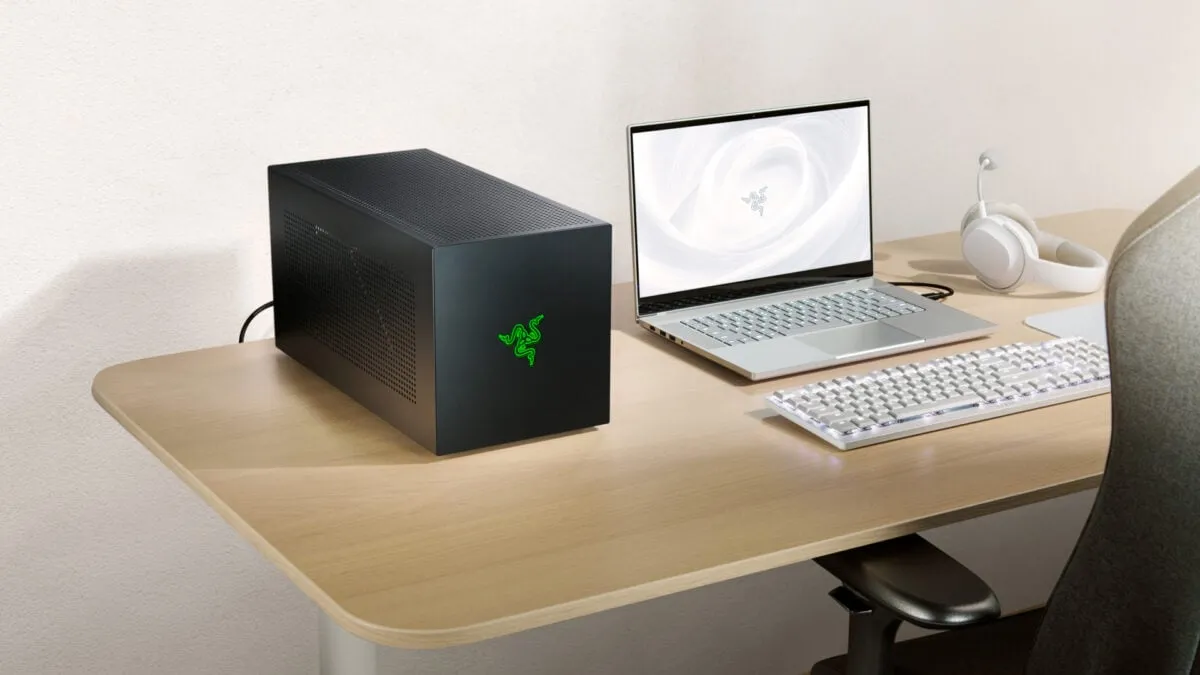
In today's rapidly evolving technology landscape, the dream of a future where we no longer rely on a traditional desktop PC to enjoy stunning gaming graphics is closer than ever. While some may consider this a fanciful notion, the advancements in external graphics processing units (eGPUs) suggest that we are on the brink of a significant shift. What we need is for PC component makers to fully embrace the potential of eGPUs, creating solutions that are as seamlessly integrated as the upcoming Switch 2—but with the added benefit of a powerful, discrete graphics card capable of transforming a laptop or handheld device into a full-fledged desktop gaming experience.
One of the most notable entries in this space is the recently launched Razer Core X V2. This device has been on my mind, as it promises to enhance the gaming capabilities of standard lightweight laptops. Priced at $350, this eGPU is essentially a shoebox filled with surplus PC components that can elevate your gaming experience. It utilizes Thunderbolt 5 connectivity, allowing for incredibly fast data transfer speeds—up to 80 Gbps bidirectional—provided that the connected device also features a Thunderbolt 5 port. Moreover, it's compatible with USB-C-based Thunderbolt 4 laptops and USB 4 handhelds, although these devices must also support external graphics to fully utilize the power of the discrete GPU.
While the Razer Core X V2 represents a significant advancement, it’s not without its shortcomings. Similar offerings, such as the Aorus RTX 5090 AI Box from Gigabyte, illustrate the limitations of current eGPU designs. After investing in Razer’s case, users still need to source their own graphics card and power supply. This requirement effectively steers consumers towards building a mini ATX desktop, rather than providing a streamlined solution for gamers on the go. It raises the question: why must eGPUs remain confined to a box? Why can’t they function as comprehensive docking stations for laptops or handheld devices?
Imagine the convenience of a portable laptop that seamlessly slots into a desktop setup, transforming your gaming experience into something akin to a console. To achieve this, we must explore innovative approaches to power management and heat dissipation. Smaller companies like Ayaneo are already making strides with products like the Graphics Starship, which houses an AMD Radeon 7600M XT and supports up to four monitors. However, this device is quite bulky, which highlights the need for more compact solutions that maintain high performance.
What if leading manufacturers like Razer combined their Dock Chroma technology with a laptop-level eGPU? Asus is making waves with its promise of the XG Mobile eGPU, featuring Thunderbolt 5 support and the potential for Nvidia GeForce RTX 5090-level graphics. Though it was first showcased by Gizmodo in January, it has yet to hit the market. This eGPU is expected to be compatible with the $900 Asus ROG Ally X, but the extent of its impact on the graphics capabilities of this premium handheld remains to be seen. Additionally, the upcoming ROG Xbox Ally X, featuring a new Xbox-optimized version of Windows, will also support XG Mobile connectivity.
As we look towards the future of eGPUs, speculation surrounds the pricing of both the Xbox Ally and the XG Mobile. While no official figures are available yet, it’s safe to assume that these advanced technologies won’t come cheap. As gaming enthusiasts, we can only hope that these innovations will pave the way for a gaming landscape where high-end graphics are accessible without the confines of a bulky desktop PC.